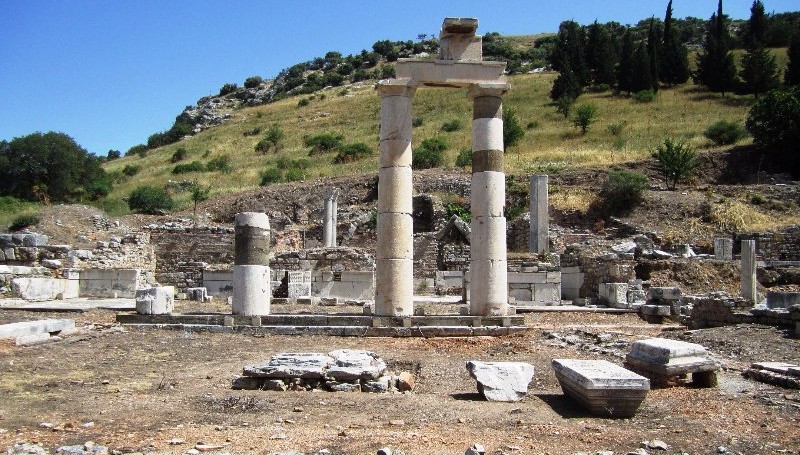Пританион, Эфес
The Prytaneion is at the upper part of Ancient Ephesus and it was built in the 1st Century A.D.
The Prytaneion is the most important holly place in Ephesus, since the eternal flame is in the Prytaneion. The eternal flame represents the existing of a city. It was very important that this flame never went out. There was a special hearth, and they were using olive oil to keep this flame. Hestia is the goddess of hearth and home. She is the chief of Goddess. Her Roman name is Vesta. Hestia or Vestia means the essence, the true nature of things. The sacred flame and the circle are the symbols. She is the daughter of the Titans, Cronus and Rhea. She also became the manager of Mount Olympia. Zeus gave her the keys of family home of mount Olympia.
The Prytaneion was also the location were celebrities and festivals started because the eternal flame was here. There were 6 strong columns in Doric order. Today two columns are re-erected. On each column lots of carvings, inscriptions are visible. These carvings are in the names of Priest and Priestess who worked in the Prytaneion for centuries.
The priests were called Curetores and the Priestesses were called Vestal Virgins. Both were in charge of keeping the flame and lead the festivals and religious ceremonies in Ephesus. Curetores were also priests in charge of the temple of Artemis in Ephesus and St. John (Apostle and Evangelist) by Byzantine Emperor Justinian in the 6th Century AD.

